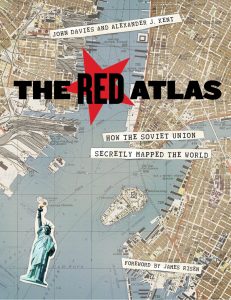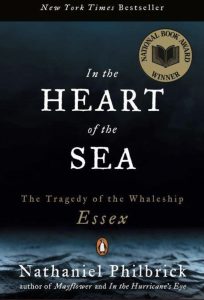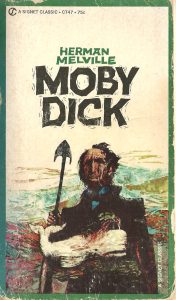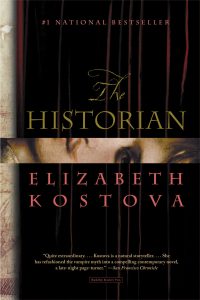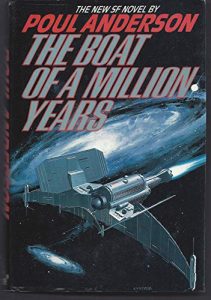Welcome to the second installment of our librarians’ summer reading recommendations!
Let’s jump straight in!
Fiction:
We started with Fiction picks last week, so let’s switch it up.
Our first suggestion, Pests: How Humans Create Animal Villains by Bethany Brookshire, comes from our friend and colleague at the Applied Physics Lab, Christina Pikas.
“Pests” can be requested through our BorrowDirect service.
A squirrel in the garden. A rat in the wall. A pigeon on the street. Humans have spent so much of our history drawing a hard line between human spaces and wild places. When animals pop up where we don’t expect or want them, we respond with fear, rage, or simple annoyance. It’s no longer an animal. It’s a pest.
At the intersection of science, history, and narrative journalism, Pests is not a simple call to look closer at our urban ecosystem. It’s not a natural history of the animals we hate. Instead, this book is about us. It’s about what calling an animal an animal a pest says about people, how we live, and what we want. It’s a story about human nature, and how we categorize the animals in our midst, including bears and coyotes, sparrows and snakes. Pet or pest? In many cases, it’s entirely a question of perspective.
Bethany Brookshire’s deeply researched and entirely entertaining book will show readers what there is to venerate in vermin, and help them appreciate how these animals have clawed their way to success as we did everything we could to ensure their failure. In the process, we will learn how the pests that annoy us tell us far more about humanity than they do about the animals themselves.
– Harper Collins
Next, we’ve got The Red Atlas: How the Soviet Union Secretly Mapped the World by Alexander Kent and John Davies which was recommended by Jim Gillespie (Social Sciences).
Available through our SAIS Libraries.
From 1950 to 1990, the Soviet Army conducted a global topographic mapping program, creating large-scale maps for much of the world that included a diversity of detail that would have supported a full range of military planning. For big cities like New York, DC, and London to towns like Pontiac, MI, and Galveston, TX, the Soviets gathered enough information to create street-level maps.
What they chose to include on these maps can seem obvious like locations of factories and ports, or more surprising, such as building heights, road widths, and bridge capacities. Some of the detail suggests early satellite technology, while other specifics, like detailed depictions of depths and channels around rivers and harbors, could only have been gained by actual Soviet feet on the ground. The Red Atlas includes over 350 extracts from these incredible Cold War maps, exploring their provenance and cartographic techniques as well as what they can tell us about their makers and the Soviet initiatives that were going on all around us.
– University of Chicago Press
Rounding out our non-fiction picks for this edition is In the Heart of the Sea: The Tragedy of the Whaleship Essex by Nathaniel Philbrick. This recommendation comes to us from Holly Tominack (Resource Sharing Specialist)
Recommended by Holly Tominack
Available at the Enoch Pratt Free Library
In the Heart of the Sea: The Tragedy of the Whaleship Essex by Nathan Philbrick is a non-fiction work about the events that inspired Herman Melville to write Moby Dick. In 1819, the Essex was attacked and destroyed by a sperm whale with a grudge. In the Heart of the Sea describes the aftermath of the wreck and how survivors kept themselves alive for ninety days until their rescue. Not for the faint of heart.
– Holly Tominack
Fiction:
Picking up where we left off with our non-fiction picks, we have a fiction partner to the non-fiction suggestion “In the Heart of the Sea”, Melville’s classic, Moby Dick. Like In the Heart of the Sea, this recommendation comes from Holly Tominack.
Available through our own Sheridan Libraries!
Deep, rich, and moody, Moby Dick by Herman Melville perfectly captures life on a whaling ship: long stretches of mind-numbing tedium then sudden furious, dangerous, exciting activity. You will learn more than you want to about whale anatomy and exactly what whalers do. Moby Dick also perfectly captures haunting, obsessive madness: PTSD before PTSD was a thing. Melville’s descriptions of life at sea are so sensually detailed you can almost smell the salt air.
– Holly Tominack
Our next choice comes from both Margaret Burri (fearless leader of Academic Liaisons) and Joshua Everett (Social Sciences). The Historian by Elizabeth Kostova is part travelogue, part Dracula, and all awesome.
Available from our own Sheridan Libraries!
Breathtakingly suspenseful and beautifully written, The Historian is the story of a young woman plunged into a labyrinth where the secrets of her family’s past connect to an inconceivable evil: the dark fifteenth-century reign of Vlad the Impaler and a time-defying pact that may have kept his awful work alive through the ages. The search for the truth becomes an adventure of monumental proportions, taking us from monasteries and dusty libraries to the capitals of Eastern Europe- in a feat of storytelling so rich, so hypnotic, so exciting that it has enthralled readers around the world.
– Hachette Book Group
Last but certainly not least is Boat of a Million Years by Poul Anderson. This comes highly recommended by connoisseur of fine science fiction, Sue Vazakas (Science and Engineering).
Available at the Enoch Pratt Free Library in various formats.
Less a novel than a series of short stories and novelettes tied together by their subjects, this volume tells of 11 “immortals”: individuals who will not die of old age but who can, however, be killed. Anderson (The Avatar) bring proven storytelling abilities and research skills to chronicles that range from 310 B.C. to a centuries-distant future. Many of the stories describe an immortal’s first awareness of his or her difference, and flight from accusations of witchcraft; other tales relate chance encounters between immortals; a few simply tell a good yarn. The penultimate chapter tells of the eight survivors coming together in present times; the last portrays a future where science has extended everyone’s life, creating a world vastly different from what the immortals had expected.
– Publisher’s Weekly


